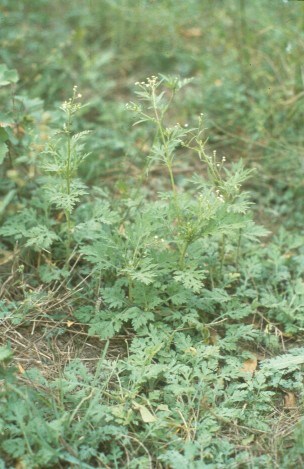|

Parthenium hysterophorus, the host of
Zygogramma bicolorata.
|
The leaf-feeding beetle Zygogramma bicolorata (Coleoptera:
Chrysomelidae) was imported from Mexico for the biological control of
Parthenium hysterophorus (Asteraceae: Heliantheae), and released in Australia in 1980 and in India in 1984. The adult beetles feed and oviposit on the leaves; the larvae feed on the young leaves initially and then on larger leaves. Fully-grown larvae pupate in the soil and the new adults emerge a week to 10 days later. There are three to four generations each year if the rainfall is good and there is fresh parthenium present, but if conditions are dry, adults cease feeding and egg-laying and pass the dry season buried in the soil. Winter is also spent in diapause in the soil, and adults re-emerge after rain in spring to feed and lay again. Feeding by both adults and larvae causes significant damage to the plants, but larval dispersal is limited to 1 to 2 m distance. The larval feeding period is also short, two to four weeks only, while adults live and feed for several months. |

